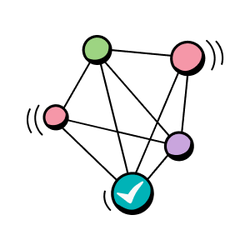
How LeanIX built a performance process focused on people

A solid performance management process relies on data. You need real insights about successes, challenges, career goals, resources, opportunities, skill gaps, and more.
But having too narrow a focus on metrics and numbers can distract you from the core of your performance process: your people.
LeanIX has found the right balance. In a breakout session at Culture First Global 2023, Dr. Anna Maria Gajda, Chief People Officer at LeanIX, and Mike Zonsveld, LeanIX’s People Business Partner, shared how the company uses data to put people at the center of performance conversations.
Moving from metrics to meaningful conversations: LeanIX’s fresh approach to performance management
“Our main goal is to create a working environment where all employees can have an impact in a sustainable way,” explains Anna. To support that idea, LeanIX built its performance process on three pillars:
- Clear direction: Ensuring employees and managers have shared expectations and an understanding of their mission
- Continuous development: Empowering employees to own their careers and their career progression
- Healthy performance: Confirming that performance is sustainable by creating psychological safety and building a healthy leadership culture
It sounds simple enough on the surface, but when you dig deeper, “it’s a completely new mindset when we talk about performance,” Anna says, explaining that LeanIX switched from a quantitative and measurement-driven approach to a method that’s far more human-centric.
“It’s now more about creating an environment where people can perform,” Mike adds. “Everything is built on development and not so much on judgment of performance. For me, as a people business partner, I’m not chasing numbers. I’m chasing meaningful conversations.”
Building a human-centric approach to performance management
In order to run a people-focused performance process, LeanIX knew that employees had to take ownership of their careers. “They are in the driver’s seat of their career by sharing their ambitions with their managers and having the career development dialogues,” Mike says.
However, LeanIX also recognized that this approach would be new to everybody – employees and managers alike – and would require education and encouragement to actually execute it. That realization affected how they rolled it out to the team. “We launched the new performance measurement in baby steps,” Anna shares.
LeanIX started with some groundwork. This included:
- Defining career levels and criteria before implementing the new process
- Explaining the new performance model and the three pillars in detail
- Creating offerings from people business partners, and external facilitators about the importance of owning your career
All of these efforts helped set the stage so that employees understood the new direction and managers understood how to best offer support. When it came to the actual structure and flow of the performance process, LeanIX kept things fairly simple by breaking the process into three fairly intuitive stages:
- Self-reflection: The employee considers their own performance, aspirations, and how their manager can better support them. They used to complete this process in a Word document but now work through it directly within Culture Amp.
- Manager review: The manager looks over the defined career levels and criteria to evaluate where the employee is right now according to those criteria. They do this directly in Culture Amp as “homework” before any performance conversations.
- Goal setting: LeanIX refers to this stage as “development dialogues” rather than performance reviews or evaluations. In these one-hour conversations, employees and their managers discuss strengths, development areas, opportunities, and more. At the end of the conversation, they work together to define goals that are put into Culture Amp so they can be measured and tracked.
LeanIX is also expanding on this process with a fourth step of “additional feedback from managers, peers, and people that have been working closely with the person,” shares Anna. That element has been added for a limited pilot group for now.
The role of data in a human-centric performance approach
LeanIX’s performance process focuses on people, but the company is also data-driven. “Data is at the core of our company,” Anna says.
So, how do they strike the balance between people and data? By viewing data more as a resource and less as a result. “We don’t just chase data for data,” Anna continues, “But to make sure that it enables us to have meaningful conversations and empower our employees.”
To put it simply, they use data to support performance rather than strictly to define performance – because data informs, but it’s people who perform.





